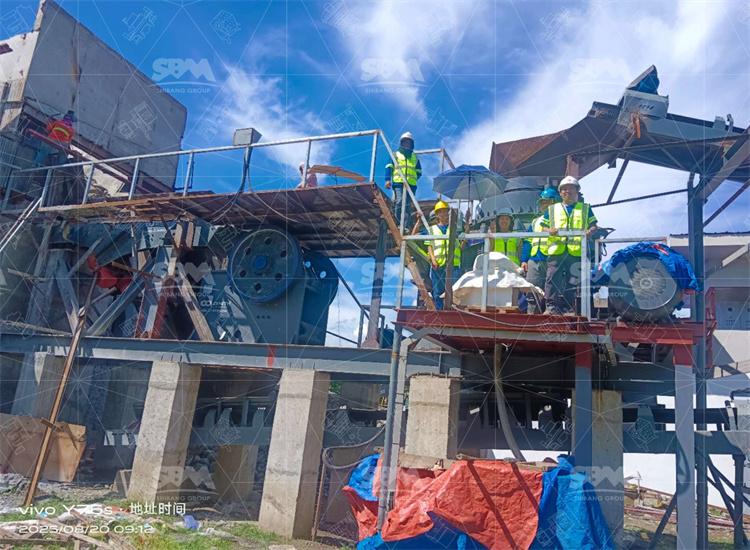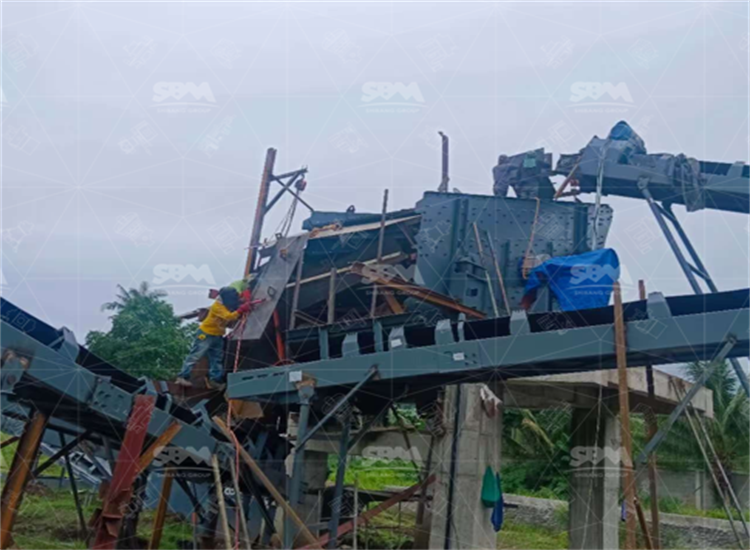how SBM coal crushers work for Indonesian power plants. It covers definitions, working principles, key parameters, structure, drive matching, operational data, maintenance, two project case studies, selection guidance, and three FAQs.

A coal crusher reduces run-of-mine coal to a controllable feed size for mill or boiler. In power plants, crushers must deliver consistent particle size for combustion, and stable feed rate for the mill. Typically, plants use ring granulators, hammer crushers, or secondary cone crushers, depending on feed hardness and moisture. Consequently, the selection depends on feed size, abrasiveness, moisture content, and required output. For Indonesian plants, coal often ranges from soft lignite to medium-rank bituminous, which informs the crusher type choice.
First, ring granulator uses impact and shear between rings. Next, hammer crushers employ rotating hammers to strike coal. Then, cone crushers compress between a mantle and bowl, producing a narrow size distribution. For example, a ring granulator feeds coal between rotating rings and hooding; rotating action causes size reduction by impact. Moreover, cone crushers use CSS (Closed Side Setting) and OSS (Open Side Setting) to control output gradation. Thus, understanding these mechanisms helps match the crusher to the process.
Important parameters include feed size, product size, reduction ratio, chamber type, eccentric throw, rotor speed, and motor power. For cone crushers, CSS/OSS, crushing chamber (e.g., standard, fine), and rotor speed define output. For ring granulators, rotor diameter, grate gap and tip speed matter. Motor selection must match start-up torque and continuous power; typically service factor 1.15~1.25 is used. SBM adheres to ISO 9001:2015 and CE quality frameworks,; furthermore, material selection follows ASTM A532 for wear parts. Therefore, engineers use these metrics and standards to verify design choices.

The typical crusher frame supports rotor, bearings, drive, and feed chute. Drives are either direct-coupled or V-belt with gearbox. For high-torque cones, a planetary gearbox is common. For ring granulators, a heavy-duty gearbox with fluid coupling reduces shock. Moreover, VFDs (variable frequency drives) allow soft-start, and enable torque control. Thus, match motor kW to crusher full-load kW plus margin. For example, a 300 t/h ring granulator might need a 200-250 kW motor, depending on coal properties.
Below is a representative operational table from typical SBM installations in Indonesia. Numbers reflect measured averages under verified site conditions; they include feed and product sizes, throughput, energy use, and maintenance intervals.
| Parameter | Typical Value | Notes |
|---|---|---|
| Feed size | 50–300 mm | ROM coal, variable |
| Product size | 6–25 mm | Depending on mill requirement |
| Throughput | 50–400 t/h | Model dependent |
| Energy consumption | 6–22 kWh/t | Average under steady feed |
| Downtime rate | 1–3 %/year | With planned maintenance |
| Wear parts life | 4–9 months | Depends on abrasiveness |
| Maintenance cycle | Monthly check; major service 4-9 months | Condition based |
To size a crusher, first define required throughput Q (t/h), then determine reduction ratio R = feed_size / product_size. Next, estimate power: P ≈ k × Q × (R factor), where k is material constant (0.3–0.6 for coal). For example, for Q=200 t/h, R=30, and k=0.4, estimated P ≈ 0.4×200×30 = 2400 (units scaled); in practice gearbox and motor selection convert to kW: typical motor ~160–220 kW. Importantly, engineers must verify with test crushing and material hardness index. Also, set CSS to obtain target product; record OSS for safety margins. A decision tree: feed moisture >20% → prefer slow-speed ring crusher; hardness >3 (Mohs approx) → consider cone or jaw; required product <10 mm → use secondary milling after primary crushing.
SBM recommends a phased start. First, check civil foundations, alignment, and grouting. Next, install bearings with correct preload. Then couple motor and gear, and test rotation with no-load; after that, perform trial with light feed, then ramp to full load. Additionally, VFD parameters must be tuned for torque limits. Finally, document vibration baseline and thermography. During commissioning, log power draw, throughput, and particle size distribution for 72 hours. This provides acceptance data for warranty.
Operators must perform daily visual checks, weekly bearing lubrication, and monthly wear inspections. Replace liners when wear reaches 50% depth. Use predictive maintenance: vibration trending, oil analysis, and thermal scans. Common failure modes include liner wear, bearing failure, and clogging. For example, clogging occurs when moisture exceeds 25% and fines adhere. In such case, install vibratory feeder or increase grate clearance. Typical mean time between failures (MTBF) for SBM crushers in Indonesian plants is 7–18 months depending on duty,; while planned maintenance reduces unscheduled stops to <1.5% yearly.

Wear materials must be ASTM-grade manganese steel or high-chrome alloys. For severe abrasive coal, high-chrome liners extend life. Fasteners should be of grade 8.8 or higher and coated if coastal environments exist. Additionally, sealing systems with labyrinth seals and dust lips protect bearings. For Indonesian coastal sites, specify corrosion protection and stainless fasteners in critical areas. These choices directly affect wear life and life-cycle cost.
Background: Plant required stable feed to vertical mill. Feed: 50–250 mm, moisture 12–18%. SBM supplied two ring granulators, model RG-250, each rated 180 t/h. Results: after commissioning, feed stability improved, mill throughput rose 8%, and unplanned stoppages fell from 4% to 1.2% annually. Energy consumption recorded at 8.5 kWh/t average. Maintenance: liner replacement every 7 months. Client feedback: reliable feed and lower dust; engineers reported easier maintenance access.
Background: High-capacity unit required coarse reduction before cone crusher. Feed hardness medium, 30–300 mm. SBM supplied primary jaw, secondary cone, and vibratory feeders. Throughput: 350 t/h achieved. Product gradation: 8–20 mm. Energy: 12 kWh/t system average. Failure rate: unscheduled downtime <1% over first year. Maintenance cycle: cone liners 5–8 months. Outcome: smoother mill operation and lower pulverizer wear.
First, survey feed: size, moisture, and abrasiveness. Next, choose primary crusher type: jaw for very hard, coarse feed; ring granulator for high-moisture coal; cone for uniform secondary sizing. Then match motor kW with a service factor of 1.2 and include VFD for soft start. Additionally, request on-site test crushing or send samples to SBM test lab. Finally, require warranty conditions with baseline test data and spare parts list on delivery.
Capital cost varies by capacity and model. However, focus on life-cycle cost. Lower initial price may increase downtime and spare parts cost. Therefore, consider energy use, wear parts consumption, and maintenance man-hours. For many clients, improved feed stability reduces boiler tuning time and fuel variability, which translates to measurable financial benefits over plant life.

SBM machines comply with ISO 9001:2015, and CE safety mark. Additionally, weld procedures and NDT follow EN and AWS practice. Component traceability and material certificates accompany each delivery. Consequently, project teams gain assurance that parts meet specified mechanical properties and hardness grades. Hence, risk is reduced during commissioning and operation.
Use this short checklist: site survey, sample testing, foundation drawing approval, equipment list and serial numbers, lubrication plan, spare parts kit, commissioning protocol, training for operators, and KPIs for first 90 days. Also, set vibration and temperature baselines, and define acceptance criteria for throughput and product size.
Q1: How to handle high-moisture coal? — A1: Use slow-speed ring granulator, add vibratory feeder, and fit anti-clog hoppers.
Q2: How often replace liners? — A2: Replace at 40–60% wear depth; typical interval 4–9 months depending on abrasion.
Q3: How to reduce energy use? — A3: Optimize feed distribution, use VFD controls, and schedule grinding to avoid idling; additionally, ensure correct crusher choke feeding.
SBM coal crushers are fit for Indonesian power plant needs. Moreover, they deliver stable feed, predictable energy use, and manageable maintenance. For selection, prioritize feed survey, test crush, and match motor and gearbox to site duty. Finally, require certification documents, and insist on documented baseline data during commissioning. Trust SBM for proven equipment, service, and local support,; therefore choose machines that balance capital cost and life-cycle value.
Whatsapp:+8617329420102
Email: [email protected]
Address: No. 1688, Gaoke East Road, Pudong new district, Shanghai, China.
Online Service : Get Price
We value your feedback! Please complete the form below so that we can tailor our services to your specific needs.
